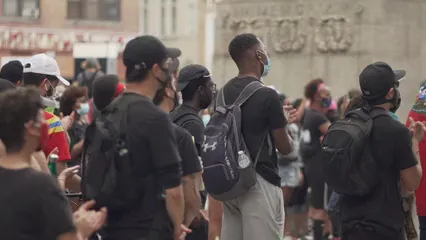Introduction
Crime statistics are vital for everyone—residents, potential movers, and researchers alike. In Tyler, Texas, understanding these numbers can illuminate community safety. After all, who wants to move to a place where crime lurks around every corner? By examining crime rates, we can gain insights into the safety of neighborhoods and the overall security of the city.
This article will break down crime statistics in Tyler, providing a comprehensive look at both violent and property crimes. We will also highlight the importance of these statistics in fostering awareness and encouraging community engagement. Knowledge is power, and it’s essential for residents to be informed about crime trends to make safe choices.
To ensure accuracy, the data presented here is sourced from reliable organizations, including the FBI and NeighborhoodScout. These reputable entities compile information from local law enforcement agencies, allowing us to present a credible overview of Tyler’s crime landscape.

Understanding Crime Rates in Tyler, Texas
Definition of Crime Statistics
Crime statistics refer to the quantified analysis of crimes reported in a specific area. They encompass various categories, including violent crimes like murder and assault, and property crimes such as burglary and theft. Understanding these statistics is crucial for assessing community safety. They serve as a benchmark for law enforcement and can influence public policy, community programs, and individual safety measures.
In Tyler, crime statistics play a significant role in shaping public perception. When residents are aware of crime trends, they can make informed decisions about their safety. After all, knowledge is like a flashlight in a dark alley—it illuminates the path ahead.
Speaking of illumination, if you’re looking to boost your home security, consider investing in a Home Security Camera System. These systems help keep an eye on your property and provide peace of mind, especially in neighborhoods with rising crime rates.

Current Crime Rates Overview
Tyler’s total crime rate stands at 28.72 per 1,000 residents. While this figure may seem daunting, it’s essential to compare it with national and state averages for context. For instance, Tyler’s crime rate is notably higher than the national average, which can lead to a heightened sense of insecurity among residents.
Here’s a summary of the current crime statistics in Tyler:
| Category | Number of Crimes | Crime Rate (per 1,000 residents) |
|---|---|---|
| Violent Crimes | 580 | 5.31 |
| Property Crimes | 2,559 | 23.42 |
| Total Crimes | 3,139 | 28.72 |
The violent crime rate, at 5.31 per 1,000 residents, indicates that Tyler faces challenges similar to those in other urban areas. Meanwhile, the property crime rate of 23.42 per 1,000 residents suggests that theft and burglary are prevalent issues.
Understanding these statistics is vital for current and future residents. By staying informed, individuals can better assess their safety and the overall environment in Tyler. Ultimately, crime statistics provide the groundwork for a safer community, where residents can thrive without the shadow of crime looming overhead.

Detailed Crime Statistics Breakdown
Violent Crime in Tyler
Overview of Violent Crimes
Violent crimes are serious offenses that involve force or the threat of force. In Tyler, Texas, the violent crime rate is 5.31 per 1,000 residents. This number indicates the number of residents who may face violent crime in any given year. While some might think this is a number only found in big cities, it’s crucial for residents to understand that Tyler is not immune to such issues. With a population hovering around 109,286, this rate translates to tangible impacts on the community.
While we hope for the best, it’s wise to prepare for the worst. Consider keeping a Personal Safety Alarm on hand. These devices can emit a loud sound to attract attention in dangerous situations, providing an extra layer of security when out and about.

Types of Violent Crimes
A closer look at the specific violent crime statistics reveals the following breakdown:
- Murder: Tyler recorded 11 incidents, a serious concern for any community. While each life lost is tragic, the number reflects a broader issue that requires attention.
- Rape: With 90 incidents reported, this statistic is alarming. It underscores the need for community awareness and strong support systems for victims.
- Robbery: There were 43 robberies, which can leave lasting effects on victims. The implications of these incidents reach beyond the initial act, affecting community trust and safety perceptions.
- Assault: Assaults accounted for a staggering 436 incidents. This category encompasses a range of violent encounters, highlighting ongoing challenges in ensuring public safety. campus sexual assault statistics are relevant here as they reflect broader societal issues.
Understanding the statistics related to assault is crucial for community awareness and victim support. campus sexual assault statistics highlight the importance of addressing these issues.

Property Crime in Tyler
Overview of Property Crimes
Property crimes involve the theft of or damage to someone else’s property. In Tyler, the property crime rate stands at 23.42 per 1,000 residents. This higher-than-average rate suggests that residents should be vigilant about securing their belongings and being aware of their surroundings.
And why not make your home a fortress? Consider installing a Home Security System. These systems provide a comprehensive approach to safeguarding your property, allowing you to rest easy knowing you’ve taken proactive steps toward security.

Types of Property Crimes
The property crime statistics provide further insight:
- Burglary: Tyler experienced 277 burglary incidents. These crimes often invade the sanctity of homes, leaving residents feeling vulnerable.
- Theft: A whopping 2,070 thefts were reported. This number reflects not just petty theft but also larger, more impactful crimes that can affect a community’s sense of security.
- Motor Vehicle Theft: There were 212 reported incidents of motor vehicle theft. This crime can be particularly distressing, as it disrupts daily life and can lead to financial burdens for victims.

Overall, the crime statistics in Tyler indicate that both violent and property crimes have significant effects on community safety. Awareness and proactive measures can help mitigate these issues. Residents are encouraged to stay informed and engaged in community safety initiatives to foster a safer environment for all.
Crime Trends and Year-over-Year Analysis
Historical Trends
Tyler, Texas, has seen significant fluctuations in crime rates over the years. While the overall crime rate may feel like a rollercoaster ride, the trends can help us understand what’s happening in the community.
Historically, violent crime rates have been a point of concern. In recent years, Tyler’s crime rate rose by 12% compared to 2021. Reports indicated an increase from 575 violent crimes in 2021 to 580 in 2022. This uptick signals a need for community vigilance. However, property crime showed a more positive trend, with a notable decrease of about 9.5%. These shifts suggest residents should remain aware while also recognizing improvements in certain areas.
The crime rate in Tyler is considerably higher than the national average. With 29 crimes per 1,000 residents, Tyler’s crime statistics indicate that it ranks worse than 88% of Texas cities. This data encourages residents to stay vigilant and engaged with community safety initiatives.

Year-over-Year Comparisons
When comparing crime rates from 2021 to 2022, the numbers present a mixed picture. The overall crime rate decreased by 5.1%, which might sound like good news. Yet, don’t let your guard down just yet! Violent crime experienced a concerning increase of 20.8%. This spike raises alarms about safety in the community.
The statistics reveal a more detailed breakdown. In 2021, Tyler had 11 murders, which remained constant in 2022. However, other violent crimes like rape increased from 87 to 90 incidents. Robberies, while comparatively lower, also saw a slight rise.
On the property crime side, burglaries decreased from 343 to 274 incidents. The decline in property crimes can be attributed to improved community awareness and better security measures. However, with thefts rising to 2,070 incidents, residents should still lock up their belongings and maybe even invest in a good security system.

If you’re looking for an extra layer of protection, consider getting a Motion Detector Alarm. These devices alert you to any unexpected movement around your property, helping to keep unwanted guests at bay.
In summary, while Tyler shows a slight overall decrease in crime rates, the increase in violent crime warrants attention. The community must actively engage in safety discussions and initiatives. Staying informed about these statistics can empower residents to make safer choices and foster a sense of security.

Victimization and Safety Perception
Chances of Becoming a Victim
Understanding the chances of becoming a victim of crime in Tyler is crucial for residents. The statistics reveal that for violent crime, the likelihood is approximately 1 in 188. This means that while it’s not a daily occurrence, it’s a reminder that caution is necessary.
When it comes to property crime, the odds are even less favorable—1 in 43. These numbers emphasize the importance of taking precautions, such as securing homes and vehicles. Remember, no one wants to be part of a statistic!

Local Perspectives on Safety
Survey results from Tyler residents paint a picture of community sentiment regarding safety. According to a recent survey conducted by AreaVibes, 52% of respondents feel safe walking at night. That’s a decent proportion! However, there’s still a significant 48% who express concerns about crime levels, indicating a divide in perceptions.
Additionally, a Niche survey found that 60% feel pretty safe, while 31% claim they have no safety concerns at all. However, 10% noted some noticeable safety concerns. These mixed feelings showcase the need for continued efforts in community safety initiatives.
The perception of safety is as essential as the statistics themselves. Understanding how residents feel about safety can drive discussions about effective crime prevention and community engagement. By working together, residents can help create a safer environment for all.
In conclusion, while crime statistics provide insight into the safety of Tyler, community sentiment also plays a significant role. Awareness, engagement, and proactive measures will help foster a safer and more secure Tyler for everyone.

Neighborhood Insights and Crime Distribution
Popular Neighborhoods in Tyler
Tyler, Texas, boasts a variety of neighborhoods, each with its own charm and quirks. But how do they stack up in terms of safety? Let’s break it down.
- Cherokee Trail Area/The Village At Cumberland Park: This area features a mix of residential homes and green spaces. The crime rate here is relatively low, making it a favorite among families seeking a peaceful environment.
- Hollytree: Known for its golf courses and upscale homes, Hollytree enjoys a good reputation for safety. Residents often praise the sense of community and low crime figures.
- Pollard Park Area: With a vibrant community vibe, this neighborhood has a slightly higher property crime rate. However, residents are proactive, organizing community watch groups to keep their streets safe.
- Jeff Davis Area/Heritage Circle: This area has a blend of historic homes and modern amenities. While property crime rates are average, local events promote neighborly connections, creating a safer atmosphere.
- Clarkston Area/The University of Texas at Tyler: With a youthful energy, this neighborhood’s crime rates fluctuate, particularly during the school year. Students are advised to stay vigilant, especially at night.
- Brookshires Area/Richmond Area: Known for its quaint charm, this neighborhood has seen a rise in property crimes, but community efforts are underway to address these concerns.
- The Woods Area East: A peaceful enclave with a focus on family life, crime rates remain low here, attracting those looking for a serene lifestyle.
- Prestonwood: This neighborhood enjoys a reputation for safety, making it a popular choice for families relocating to Tyler.
- Bellwood: A family-friendly zone that prides itself on community spirit. Crime rates are lower than average, contributing to its appeal.
- Brixworth Area/Libbie Area: With a mix of residential and commercial spaces, crime rates are moderate. However, community engagement initiatives are in place to enhance safety.

Understanding these neighborhoods can help potential residents make informed decisions about where to call home. Each area has its unique vibe and safety measures in place, ensuring that Tyler remains a great place to live—despite the occasional hiccup in crime rates.
Crime Map Analysis
A crime map serves as a visual representation of crime distribution across Tyler, highlighting areas with high and low crime rates. This tool is invaluable for potential residents. It allows them to pinpoint neighborhoods that align with their safety preferences.
High-crime zones often correlate with busy commercial areas or entertainment districts, where foot traffic increases opportunities for petty crime. Conversely, quieter residential neighborhoods typically show lower crime rates, reflecting community efforts to maintain safety.
The implications of this data extend beyond mere statistics. Potential residents can evaluate whether a neighborhood fits their lifestyle and safety needs. By using the crime map, individuals can make smarter choices about where to live, ensuring their new home feels secure and welcoming.

Comparison with Nearby Cities
Crime Rate Comparison Table
When looking at crime rates, context is essential. Here’s how Tyler stacks up against nearby cities like Whitehouse, Lindale, and Bullard:
| City | Violent Crime Rate (per 100k) | Property Crime Rate (per 100k) | Total Crime Rate (per 100k) |
|---|---|---|---|
| Tyler | 530 | 2,327 | 2,857 |
| Whitehouse | 120 | 872 | 992 |
| Lindale | 191 | 2,265 | 2,456 |
| Bullard | 98 | 640 | 739 |

In this comparison, Tyler’s crime rates are notably higher than those of Whitehouse and Bullard, while Lindale shows a similar property crime rate. The higher violent crime rate in Tyler raises eyebrows, but it’s crucial to consider the overall community dynamics.
Insights on Regional Crime Trends
Tyler’s crime rates paint a complex picture within the region. While it has higher rates than its nearby counterparts, this could stem from urbanization and population density. Communities like Whitehouse and Bullard, being smaller and less densely populated, naturally experience fewer incidents.
Additionally, Tyler’s vibrant lifestyle and economy attract more people, which can lead to increased crime opportunities. This trend underscores the importance of community vigilance and proactive measures to ensure safety. Residents must remain engaged, fostering relationships with law enforcement and participating in neighborhood watch programs.
In conclusion, while Tyler faces challenges regarding crime rates, understanding the broader regional context reveals opportunities for improvement and community engagement. By analyzing these statistics, residents can contribute to creating a safer environment for all.
Data Source and Methodology
Explanation of Data Sources
To provide accurate crime statistics for Tyler, Texas, we relied on several reputable sources. The primary data contributors include the FBI, NeighborhoodScout, and AreaVibes. The FBI’s Uniform Crime Reporting (UCR) Program is a cornerstone for crime data nationwide. It compiles reports from over 18,000 local law enforcement agencies. NeighborhoodScout offers comprehensive crime risk analytics, using a unique formula to evaluate crime data at a neighborhood level. AreaVibes provides insights based on community feedback and local statistics, giving a rounded perspective on crime trends.
These sources ensure that the data is not only reliable but also relevant to understanding the safety dynamics specific to Tyler.
Methodology for Data Collection
Data collection involves several steps. First, local law enforcement submits reports to the FBI. This includes categories such as violent crimes and property crimes. NeighborhoodScout and AreaVibes process this data, applying statistical methods to analyze trends and present findings.
However, like any data, there are limitations. Reporting practices can vary, and some crimes may go unreported. Moreover, the data reflects the calendar year of 2022, with the latest updates released in October 2023. This means our insights are based on the most recent available information, but they may not capture the very latest shifts in crime patterns.
Overall, while this data helps illustrate the crime landscape in Tyler, it is essential for residents to remain engaged and informed. Awareness and active participation in community safety initiatives can significantly impact the local environment.
Conclusion
Recap Key Findings
In examining Tyler’s crime statistics, several key insights emerge. The total crime rate stands at 28.72 per 1,000 residents, surpassing both the national and state averages. Violent crime, at 5.31 per 1,000 residents, poses a significant concern, particularly in categories like assault and rape. Property crime, especially theft, remains a prevalent issue, with a rate of 23.42 per 1,000 residents.
These statistics highlight the challenges Tyler faces in ensuring community safety. The rising trend in violent crime, alongside a slight decrease in property crime, underscores the need for ongoing vigilance among residents and local authorities.
Call to Action
Staying informed about crime trends in Tyler is crucial for enhancing community safety. Residents are encouraged to engage with local law enforcement, participate in neighborhood watch programs, and attend community safety meetings. Sharing experiences and insights can foster a stronger, more cohesive community that effectively addresses safety concerns. Let’s work together to ensure Tyler remains a place where everyone feels secure and welcomed!
FAQs
What is the overall crime rate in Tyler, Texas?
The overall crime rate in Tyler is 28.72 per 1,000 residents, which includes both violent and property crimes.
How does Tyler’s crime rate compare to other Texas cities?
Tyler’s crime rate is higher than 88% of cities in Texas, indicating a significant concern for both residents and potential movers.
What measures can residents take to increase safety in Tyler?
Residents can join community safety initiatives, stay informed about local crime trends, and engage in neighborhood watch programs to enhance safety.
Are there any specific neighborhoods in Tyler that are safer than others?
Yes, neighborhoods such as Hollytree and the Cherokee Trail Area generally have lower crime rates, making them popular among families.
Where can I find more detailed crime data for Tyler, Texas?
For more detailed crime data, visit resources like the FBI’s UCR, NeighborhoodScout, or AreaVibes, which provide comprehensive crime statistics and insights.
Please let us know what you think about our content by leaving a comment down below!
Thank you for reading till here 🙂
All images from Pexels




